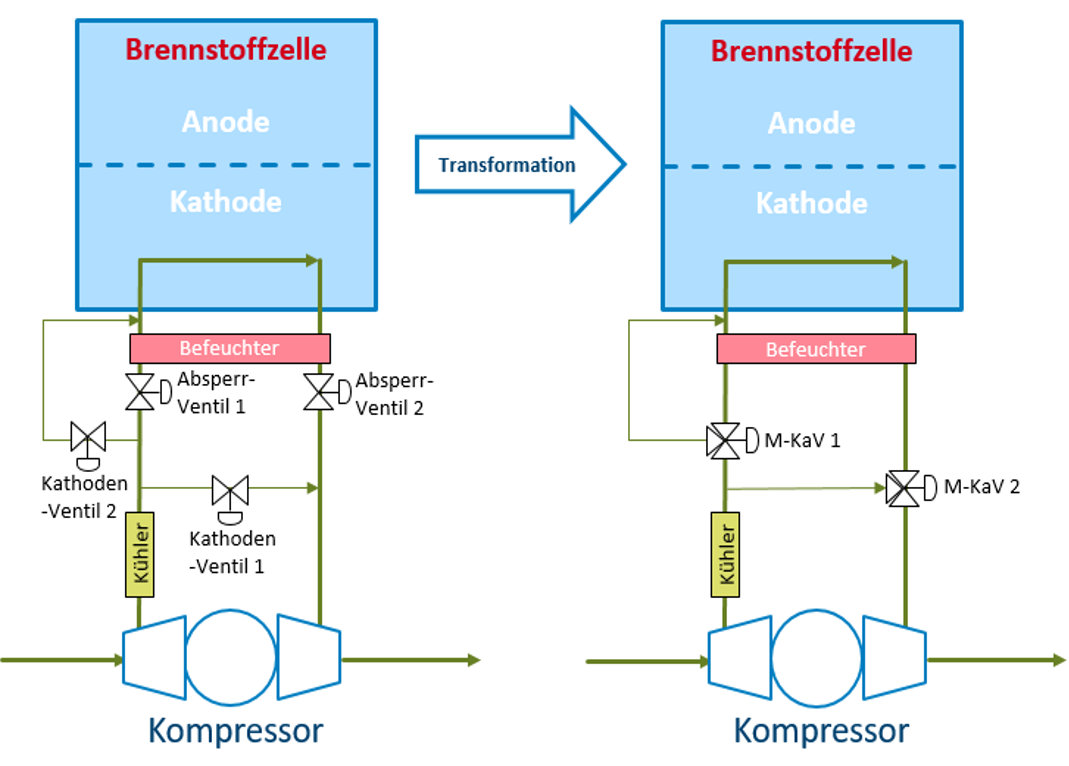As part of the recently started joint project M-KaV, a functionally integrated multi-way valve for the cathode path of fuel cell systems is now being developed. Such a valve would allow a significant reduction in the number of necessary valves in the cathode path and thus bring further advantages:
- Reduction of necessary tubing and wiring
- Reduction of assembly effort
- Simplified packaging and reduced installation space
- Shortening of media paths and thus reduction of flow losses
- Lower material usage with weight reduction, lower overall costs
- Extension of service life
Specific challenges in development arise from the close interaction between the valve and the fuel cell. This results in particular stresses on the valve and at the same time particularly high requirements for the material selection, as leaching from the valve could have serious consequences for fuel cell operation. To minimize this risk, the project includes extensive material studies and the development of suitable test cycles.
The overarching goal of the project is to develop the valve for use in various fuel cell systems, such as PEM, SOFC, and AFC. The valve should be adaptable to the respective system. This is intended to reduce investment and maintenance costs, thereby giving a further boost to the competitiveness of fuel cells.
Project goals for us at ZBT are:
- Development of a multi-way valve for controlling the air and exhaust mass flows in the cathode path of a fuel cell
- Integration of multiple functions in one actuator
- Validation of a simulation model of the valve and simulation of the overall fuel cell system with integrated valve
- Identification of suitable materials for fuel cell operation with a focus on service life
- Test operation with a focus on tightness/diffusion
- Proof of continuous operation under fuel cell-specific conditions
- Reduction of material and resource usage as well as production costs
Background
As part of the programme “Measures for Research, Development, and Innovation under the National Innovation Programme Hydrogen and Fuel Cell Technology Phase II” by the Federal Ministry for Digital and Transport (BMDV), new solutions are being developed to further reduce CO2 emissions in the mobility sector, improve the service life of fuel cell systems, and reduce costs.
NIP II – R&D – Joint Project: Multi-way Cathode Valve
Subproject: Simulation System Dynamics and Material Qualification (M-KaV)
Funded by: Federal Ministry for Digital and Transport
Funding ID: 03B11038B
Project duration: 1 Dec 2023 – 30 Nov 2026
Fuel Cell Systems Department


